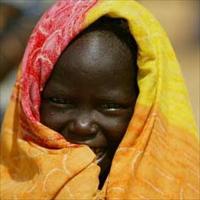AFRICA: Many children still miss out on treatment

Experience has shown that it is possible to run successful paediatric HIV programmes in rural African settings, yet less than 10 percent of patients on life-prolonging antiretroviral (ARV) drugs are children, field officers of the international medical NGO, Médecins Sans Frontieres (MSF), have said.
"Studies show that without treatment, 50 percent of children with HIV will die within the first two years of their lives," Fernando Parreno, who has worked for MSF's ARV programme in Bulawayo, Zimbabwe's second city, said at the recent International AIDS Conference in Mexico City. "It is imperative that all children are diagnosed and started on treatment as early as possible after diagnosis, or too many children will continue to die."
Children in rural Africa are rarely taken to hospital for HIV testing and accurate testing facilities for children are few and far between, so they are often diagnosed too late to benefit from treatment programmes.
MSF has more than 10,000 paediatric patients in more than 50 projects in poor countries around the world. An analysis of all child patients under five who started taking ARVs in 2002 found that by January 2008, 79 percent were still on treatment.
"In Rwanda, where MSF has over 300 children on ARVs, we decided to increase testing by proposing to all patients that they bring their children in for testing," said Johan Van Griensven, of MSF's programme in Rwanda. "We faced reluctance from the nurses, who were uncomfortable disclosing the HIV status of children, and from parents, who feared a positive result and its implications."
Van Griensven said after training the nurses were better able to disclose a child's status to them in a sensitive and informative way. Parents whose children test positive are actively encouraged to disclose their children's status to them.
"We have developed child-adapted tools to talk to children about HIV in ways they can understand," he added. "But as kids get older their perceptions change, so it is important to keep supporting them as they grow into adolescence; support groups have been very helpful in enabling children to talk openly about their experiences."
Helen Huerga, who is with MSF Kenya, said it was crucial for the family to be involved in the child's treatment, so programmes encouraged parents to attend children's clinic days; she also noted that community support was crucial to follow-up.
Need for suitable ARVs
However, support at the community and health centre level was not being matched with the same commitment by large drug manufactures, according to Karen Day, a pharmacist from MSF's Campaign for Access to Essential Medicines.
"Although there are 13 ARV formulations specifically developed for children, they are not adapted for use in resource-poor settings. Most of them are liquid, and come as three, often unpalatable, separate drugs that are difficult for children to take; others are in powder form and need to be reconstituted. In many cases there may not be an adequate supply of clean water to do this," she said.
"What we need from the drug companies are small, scored – and therefore easy to halve – tablets that are chewable and stable at high temperature and high humidity," Day suggested. "They must also develop fixed-dose ARVs for children; so far, only one fixed-dose exists, and none for second-line treatment."
She said there was a need to reach children earlier with treatment in order to improve their chances of survival. New guidelines by the UN World Health Organisation recommend that children under 12 months be diagnosed as early as six weeks and be started on treatment immediately, regardless of CD-4 count (which measures the strength of the immune system) or clinical signs.
- GAMBIA: President’s herbal HIV/AIDS 'cure' boosts ARV use
- UGANDA: Home-based HIV treatment extends lives (Audio)
- More HIV-positive children and pregnant women getting AIDS treatment, new report says
- International forum calls for improved social services to tackle child poverty in developing countries
- GUINEA-BISSAU: Testing without treatment – an island’s dilemma
 Back and Next - Back and Next
Back and Next - Back and Next See Also - See Also
See Also - See Also